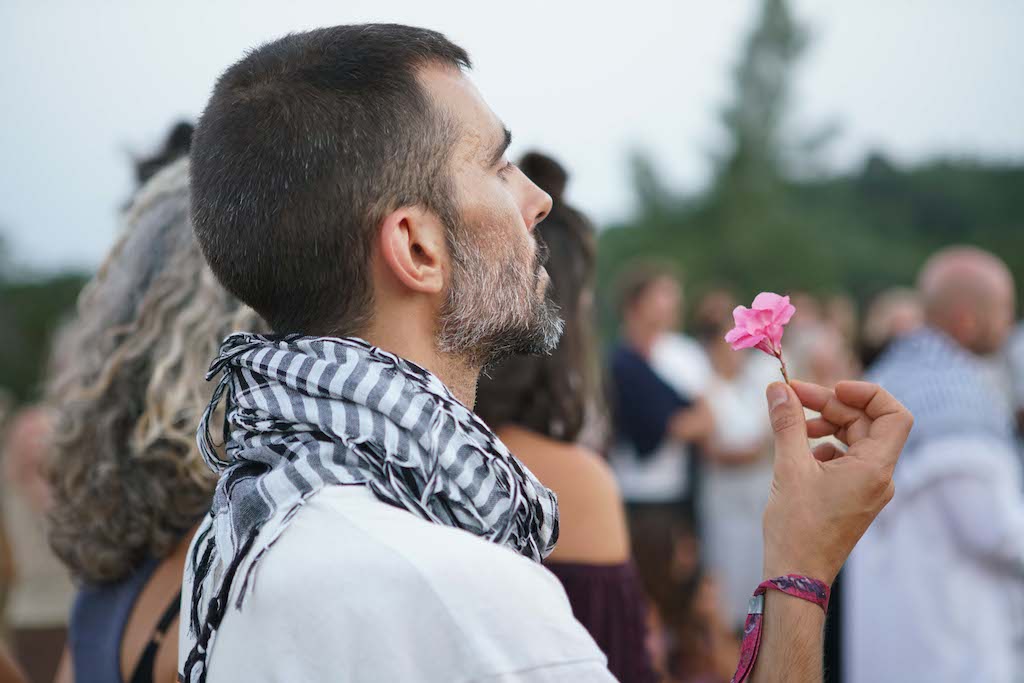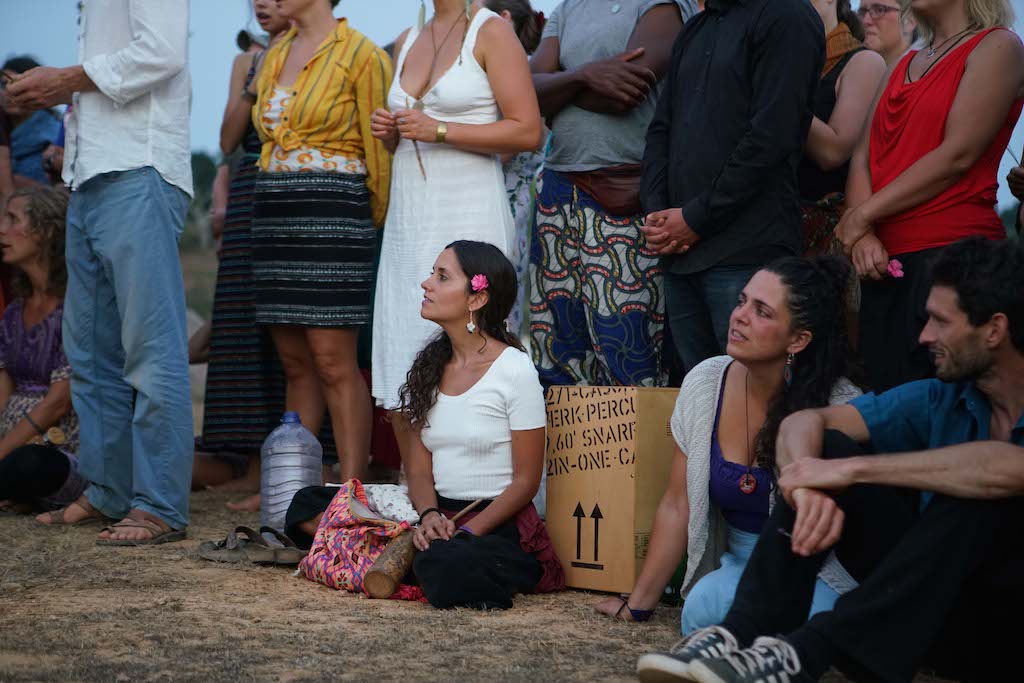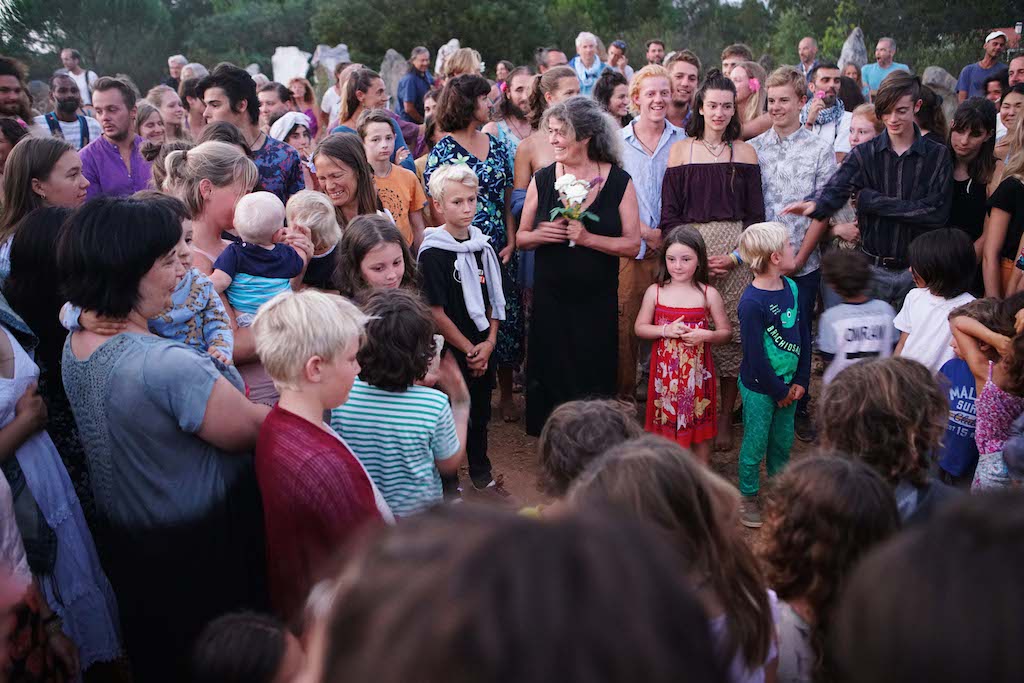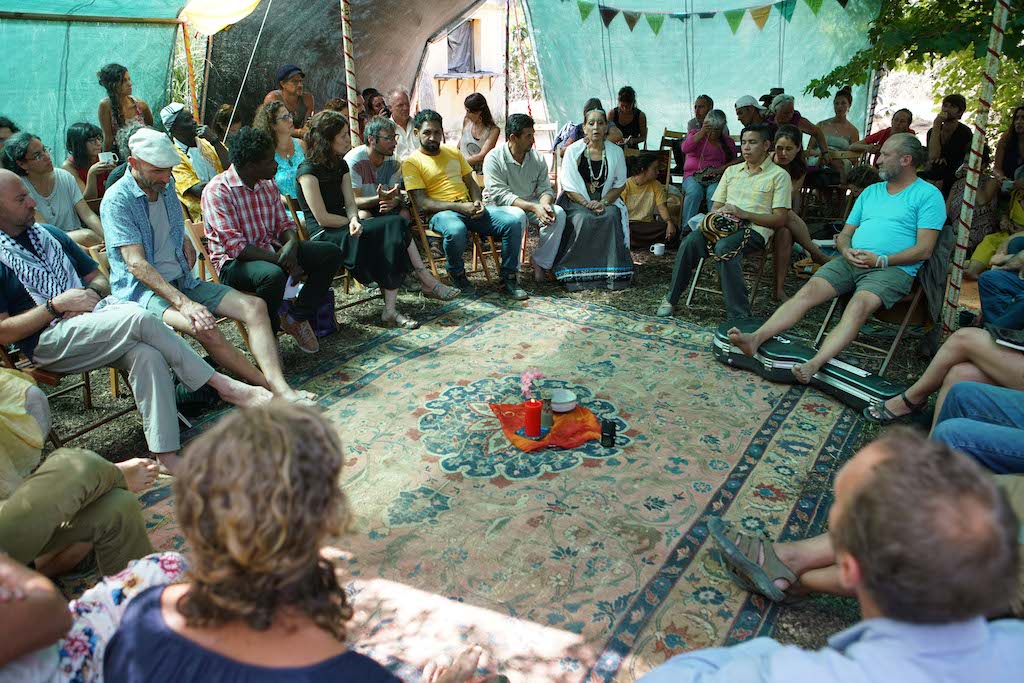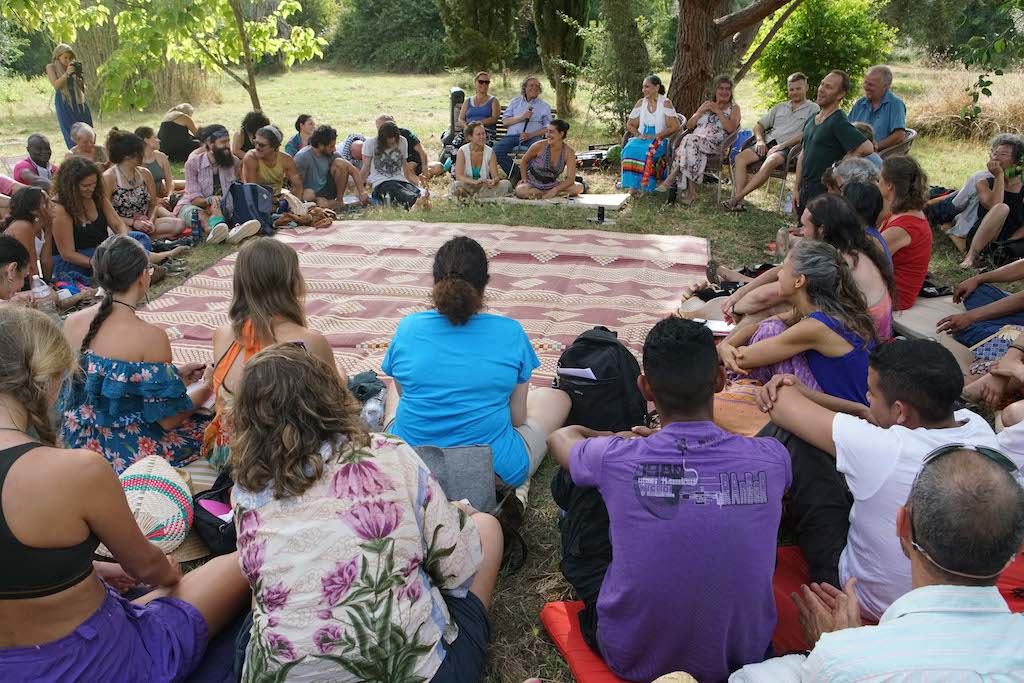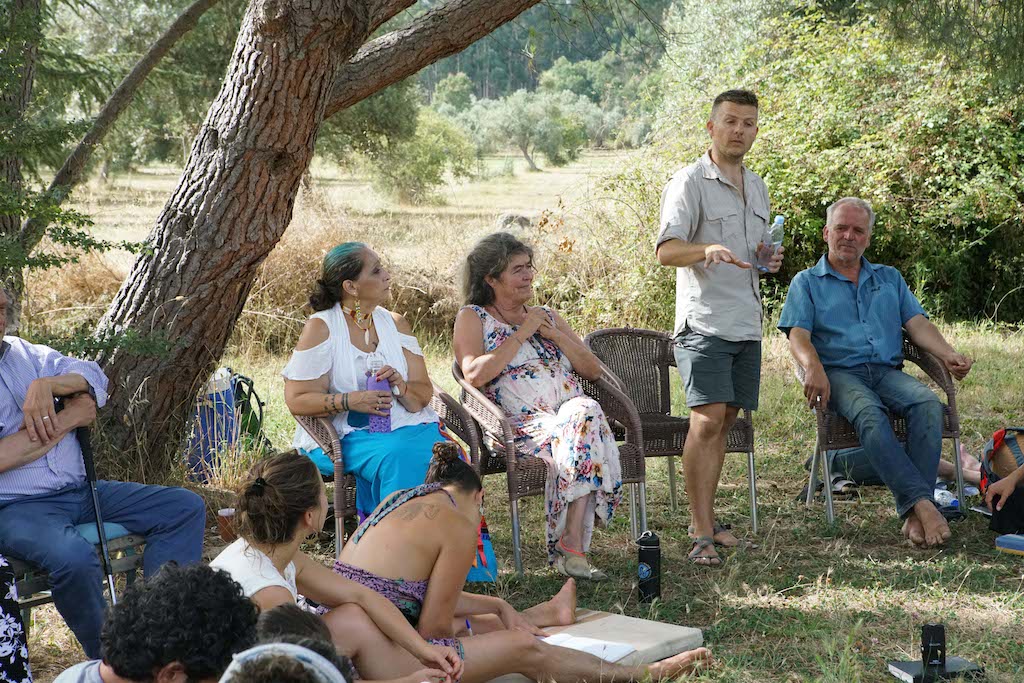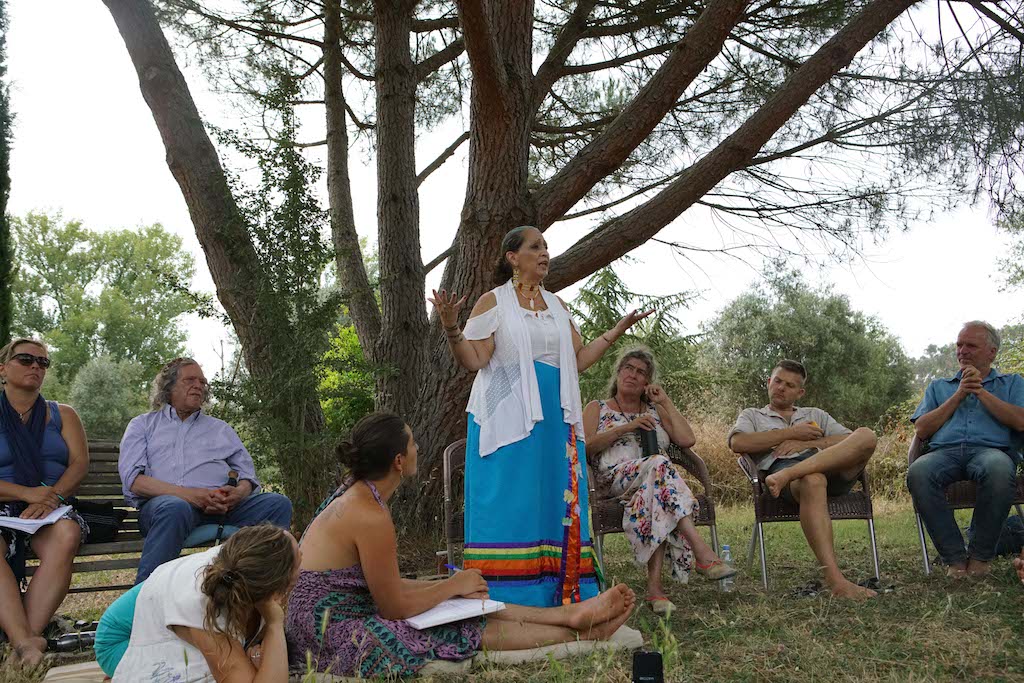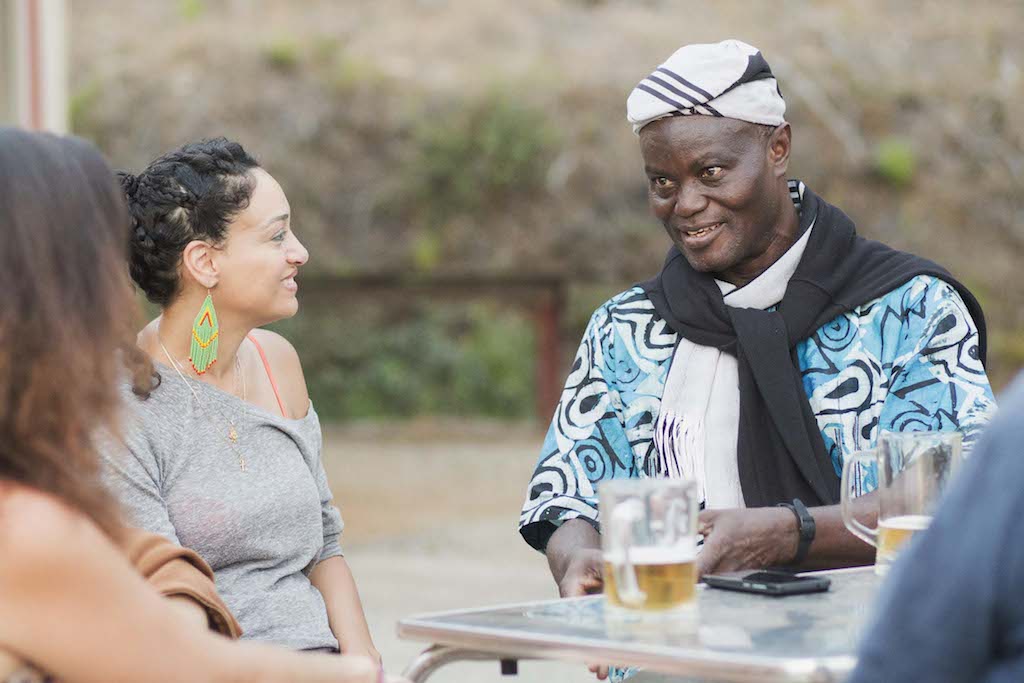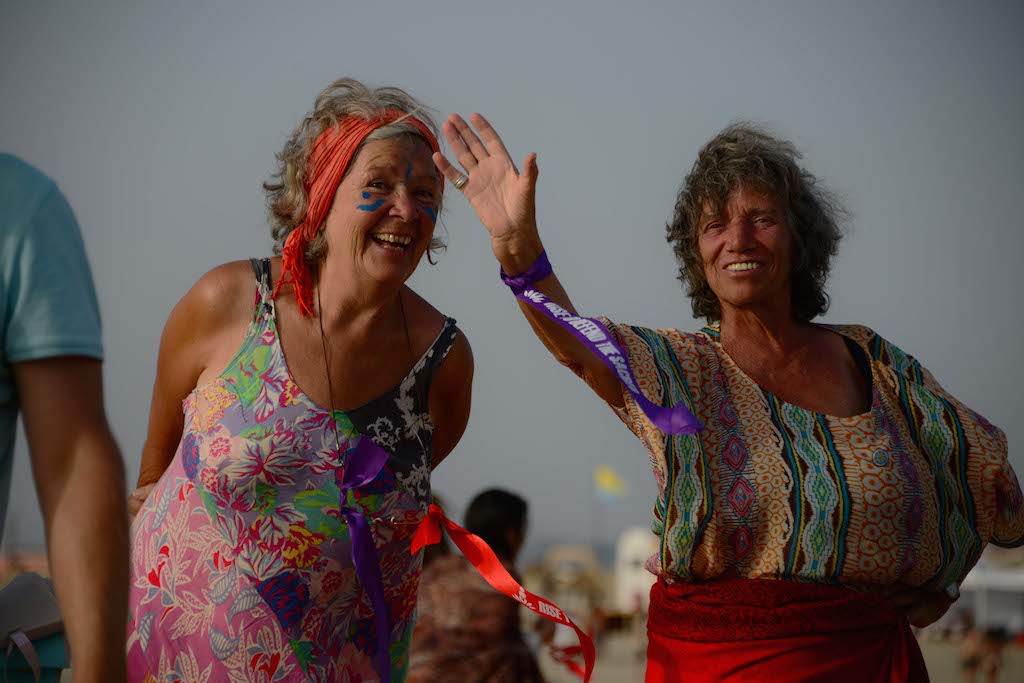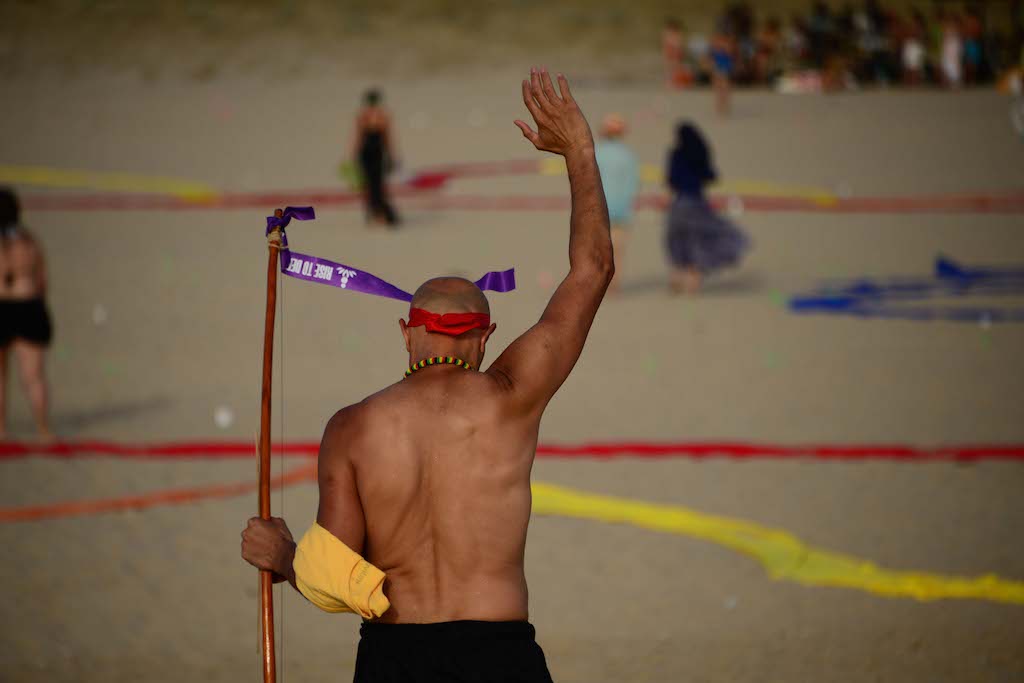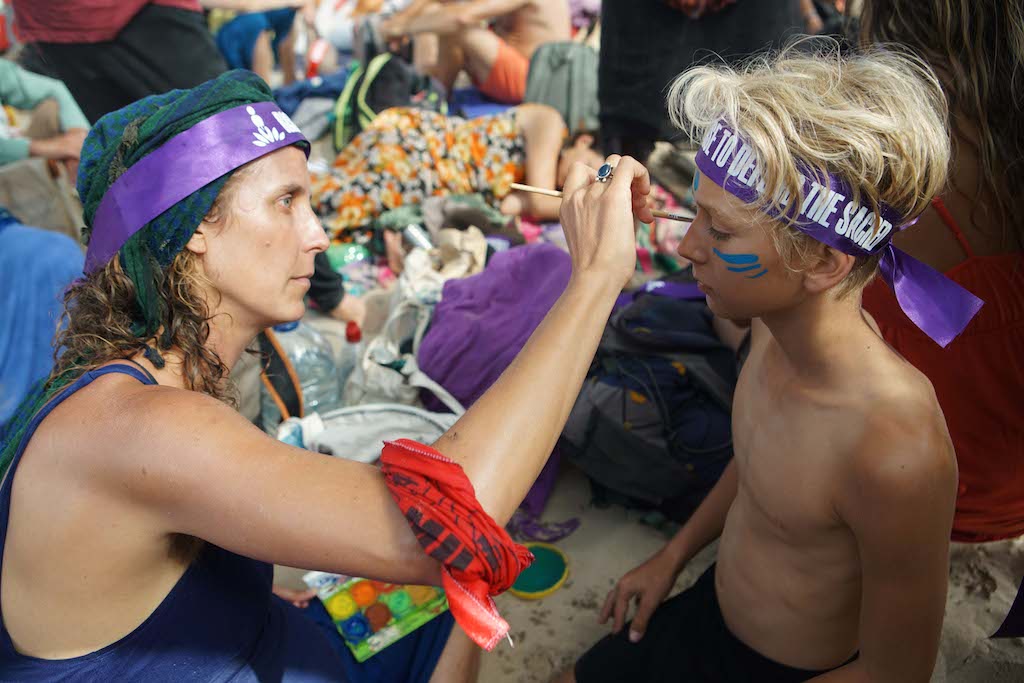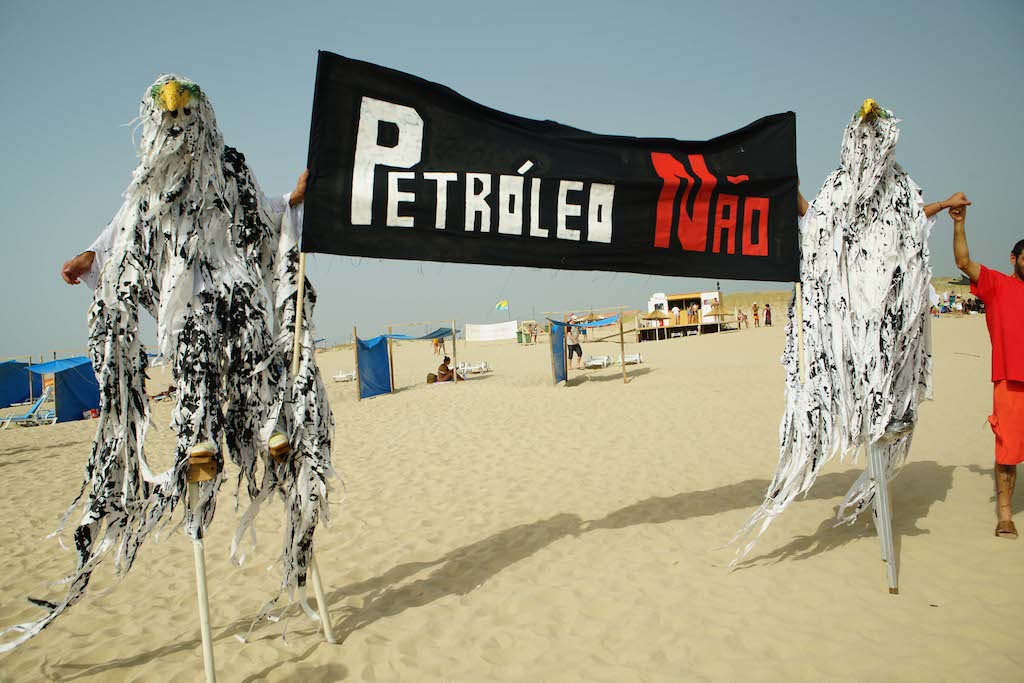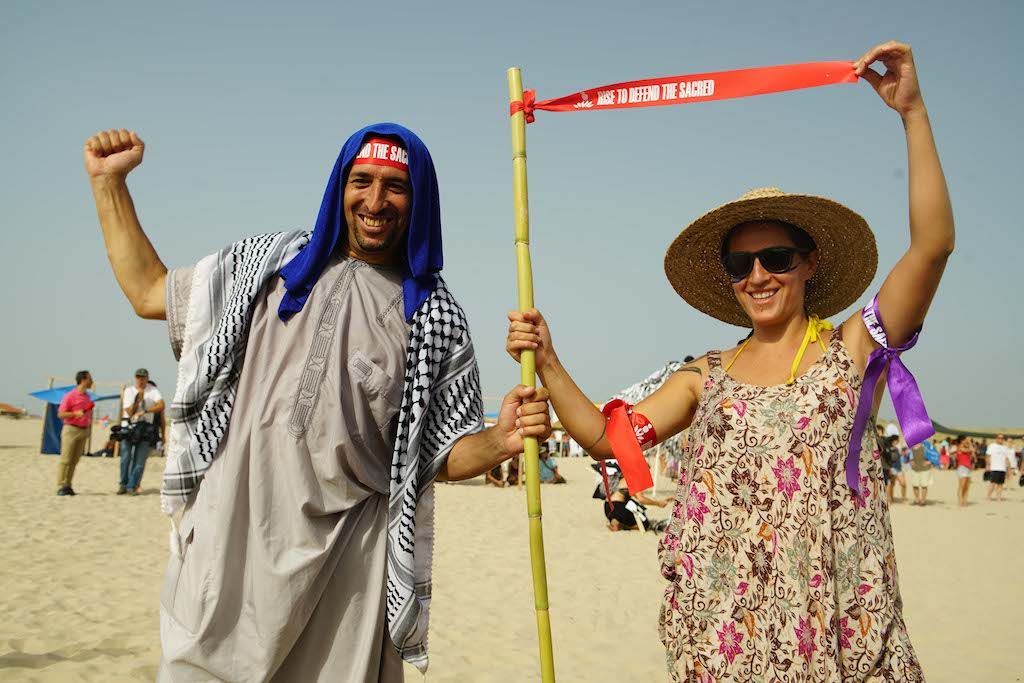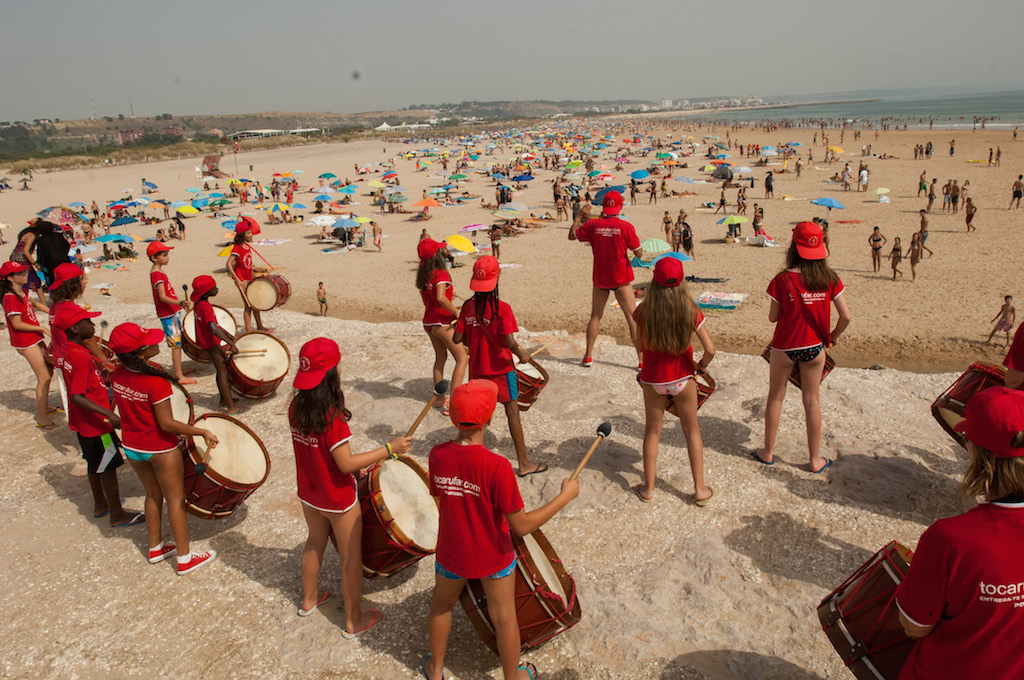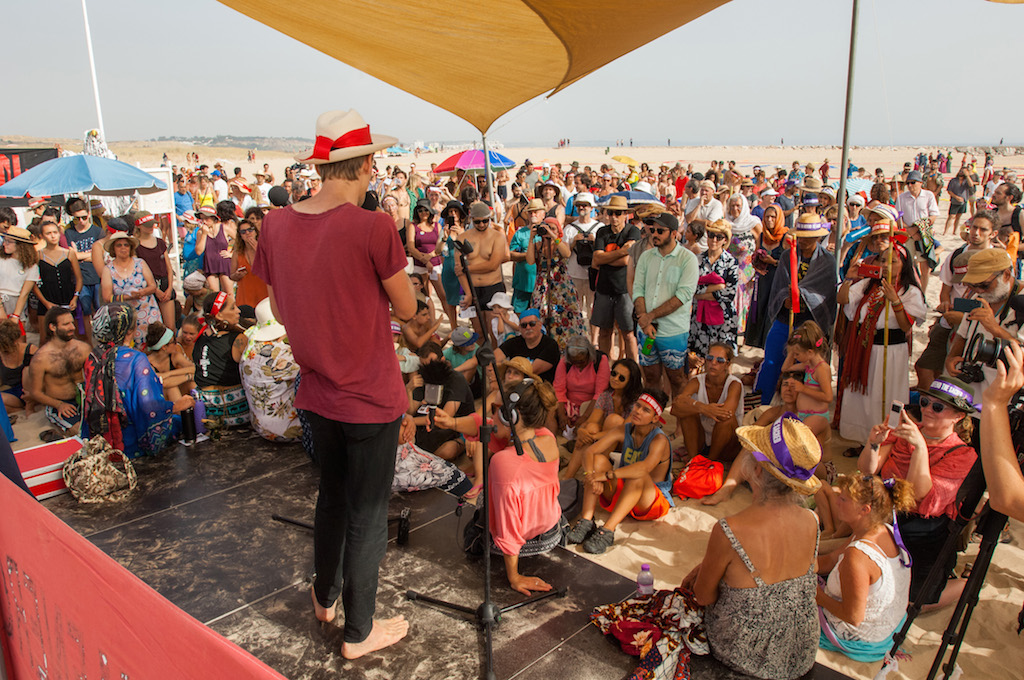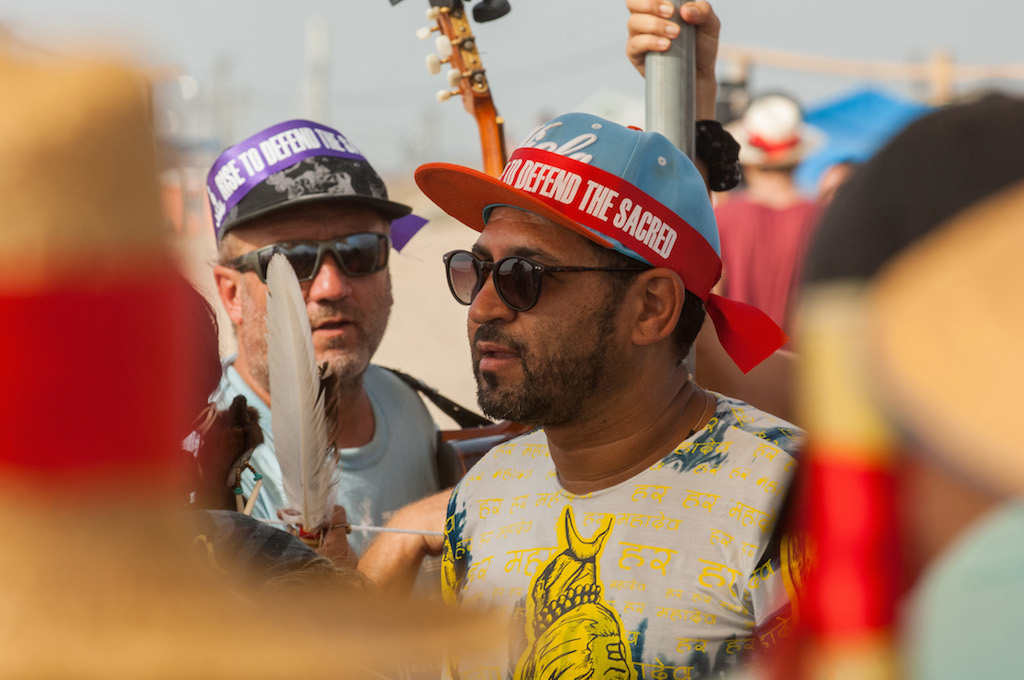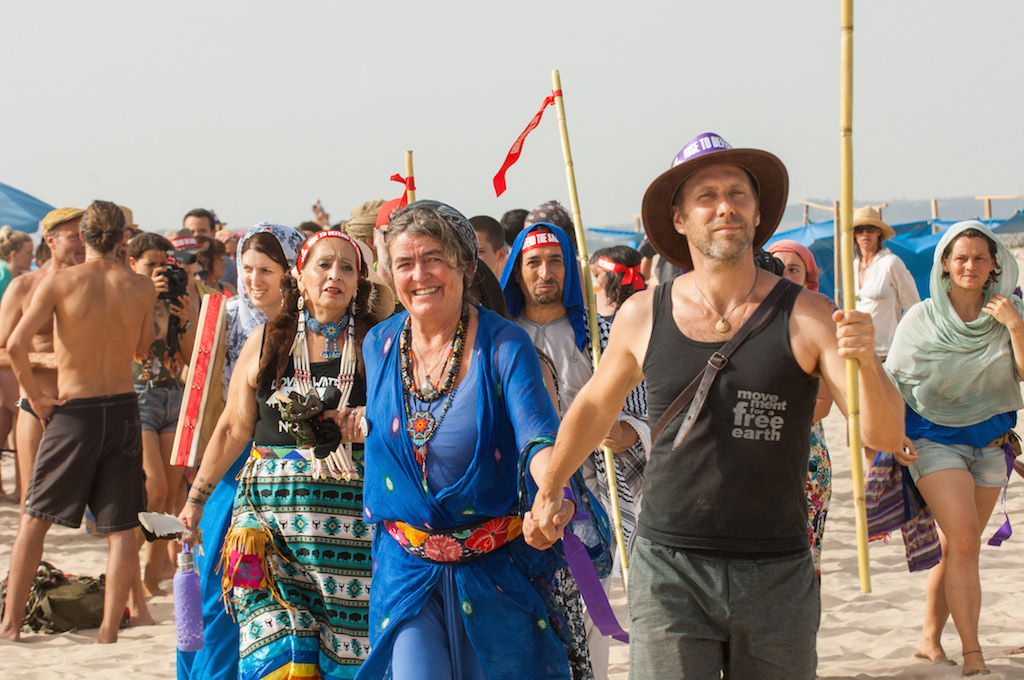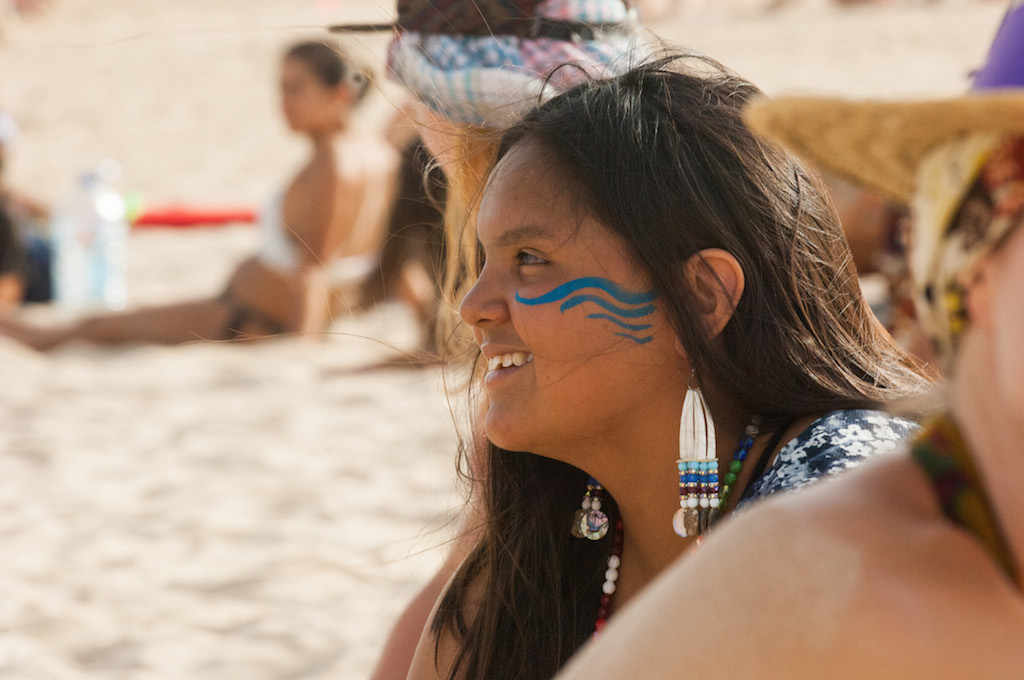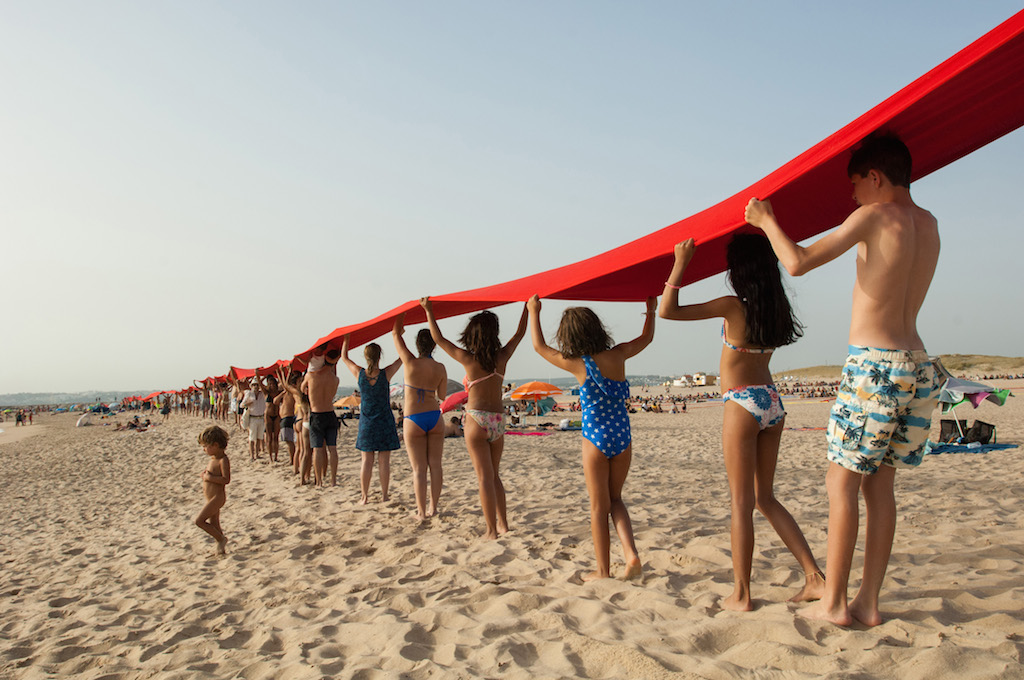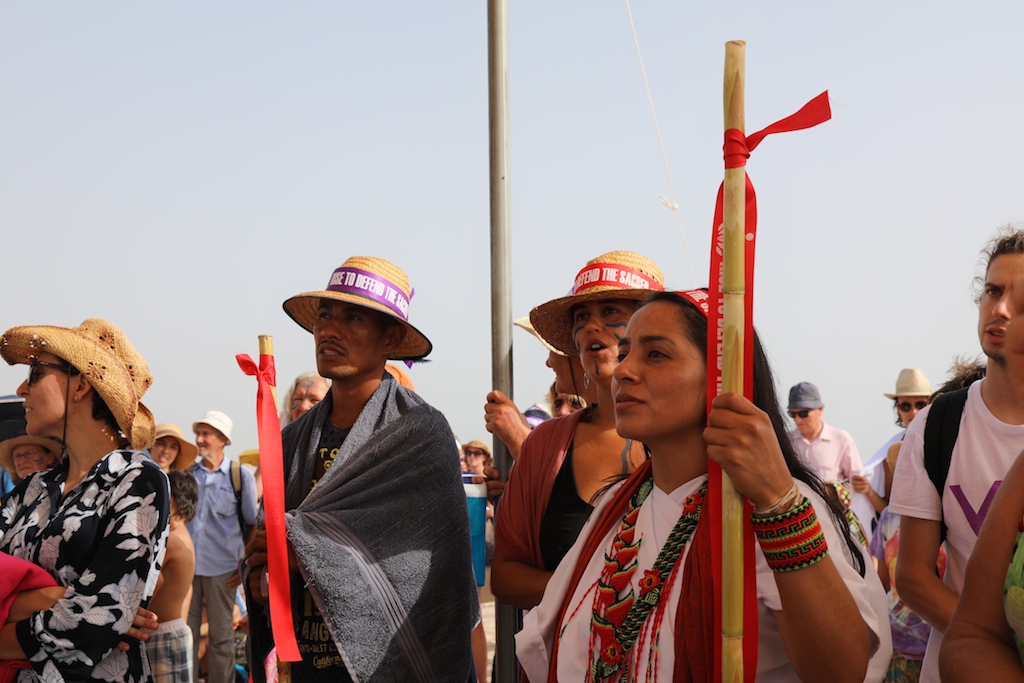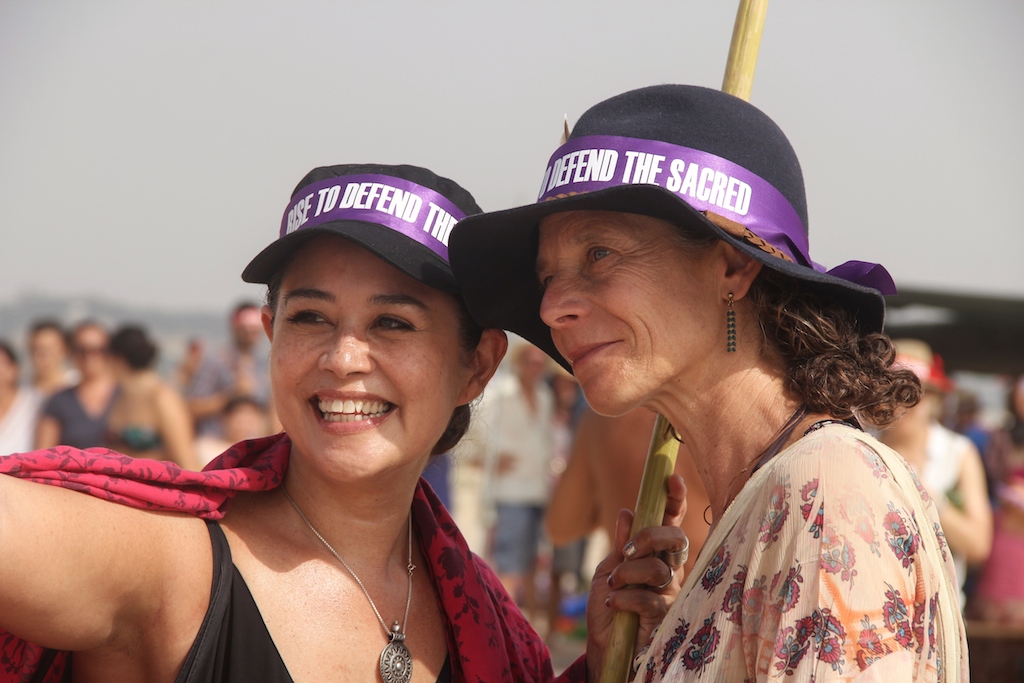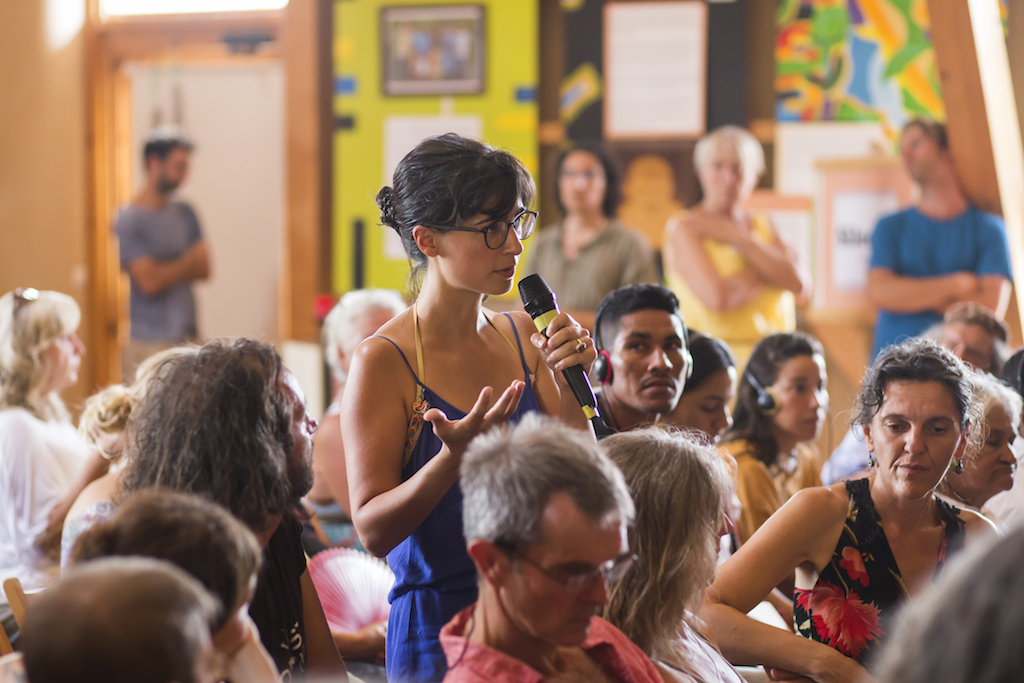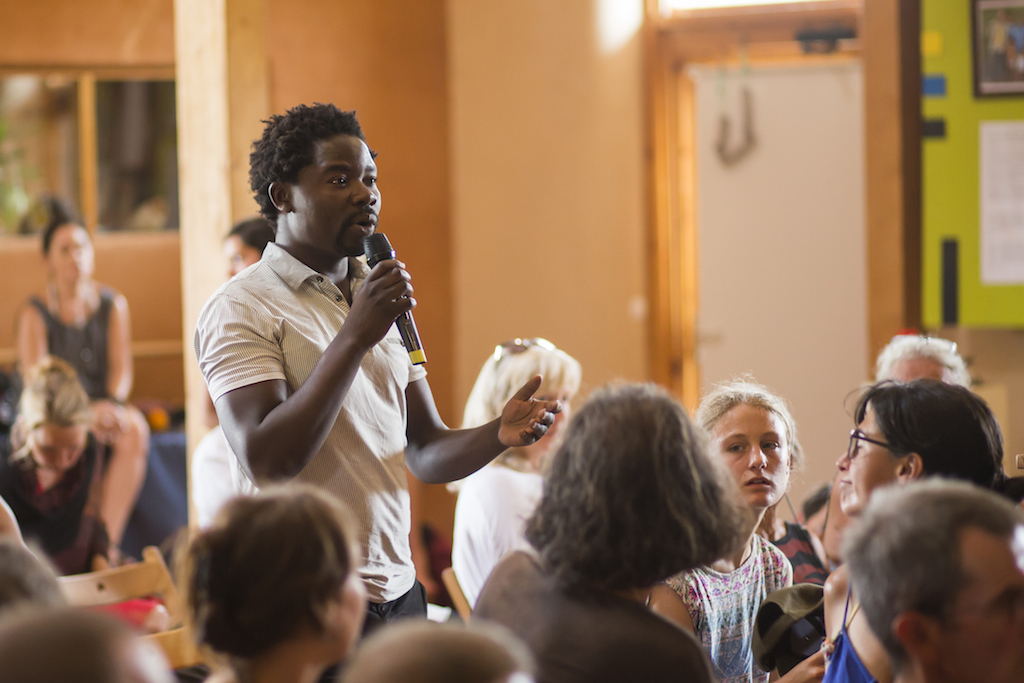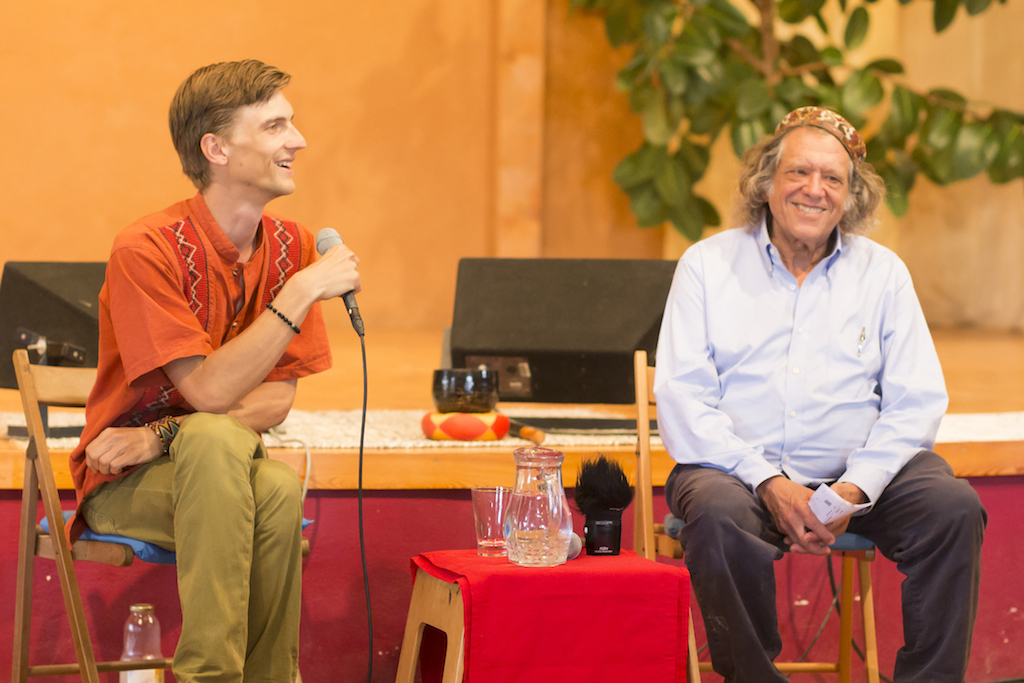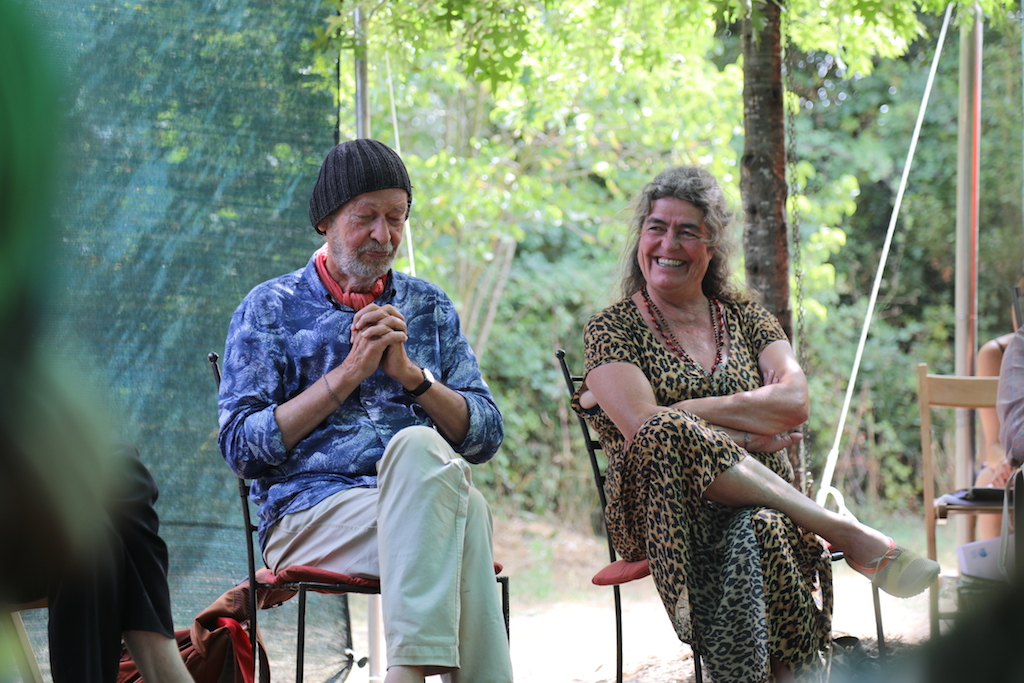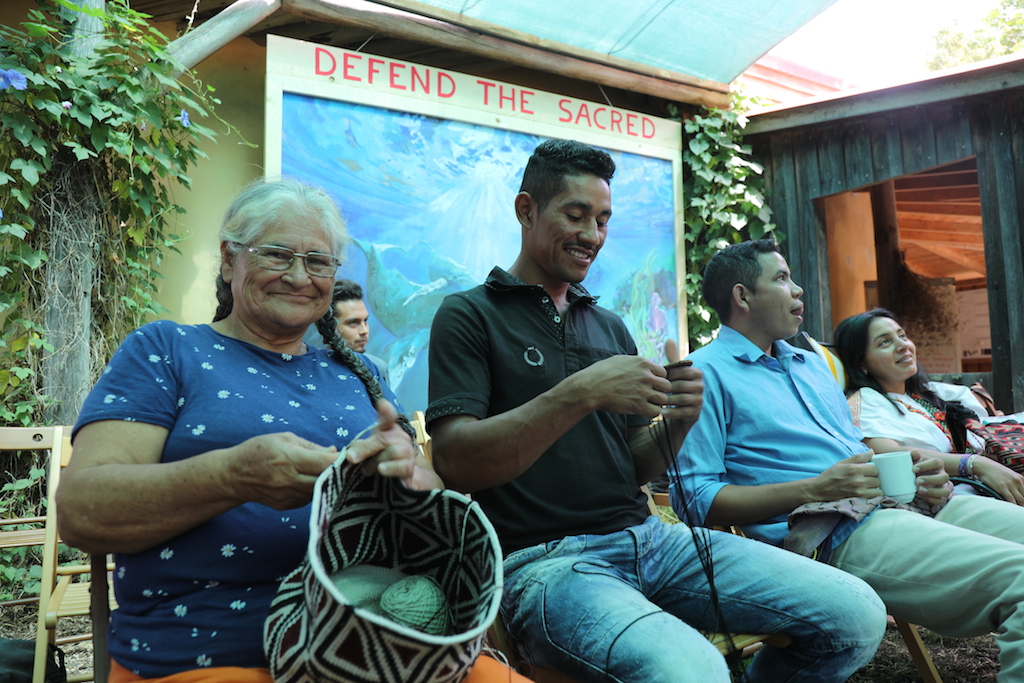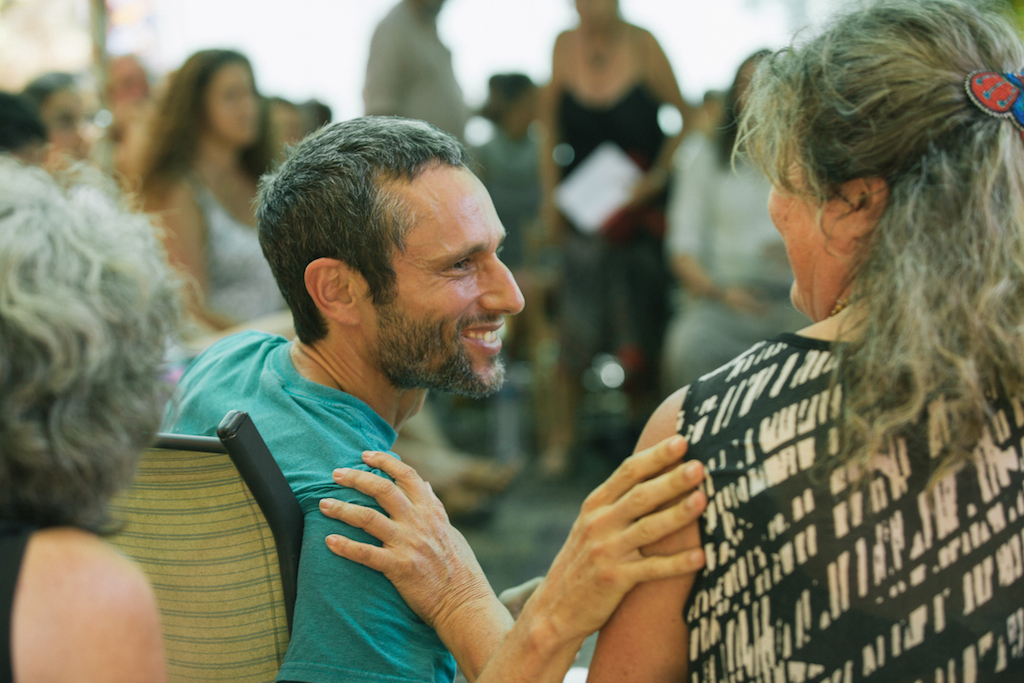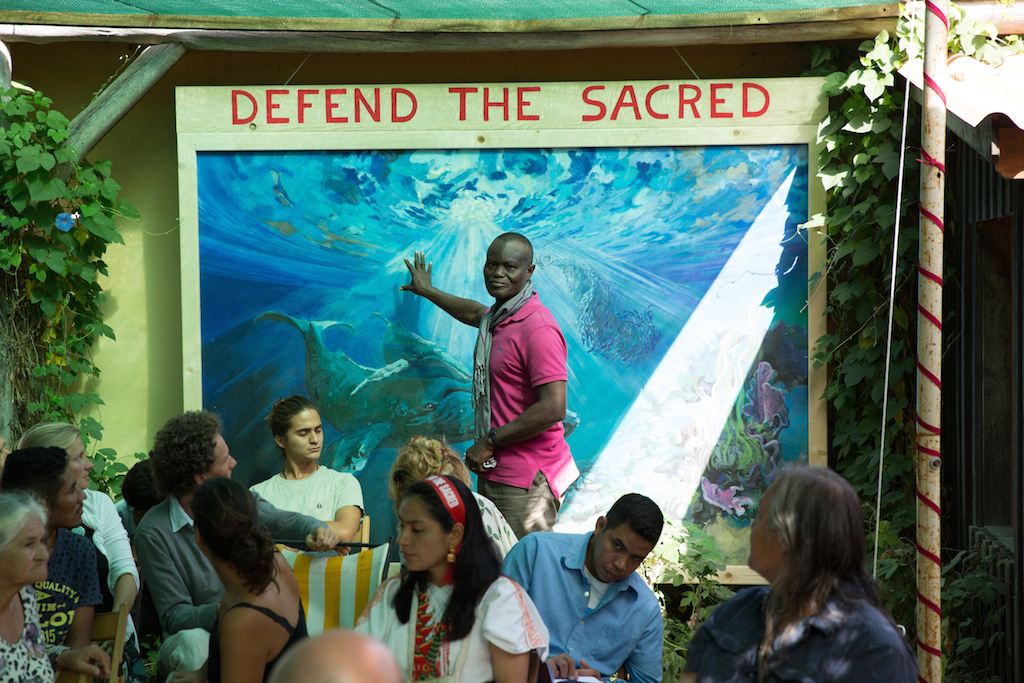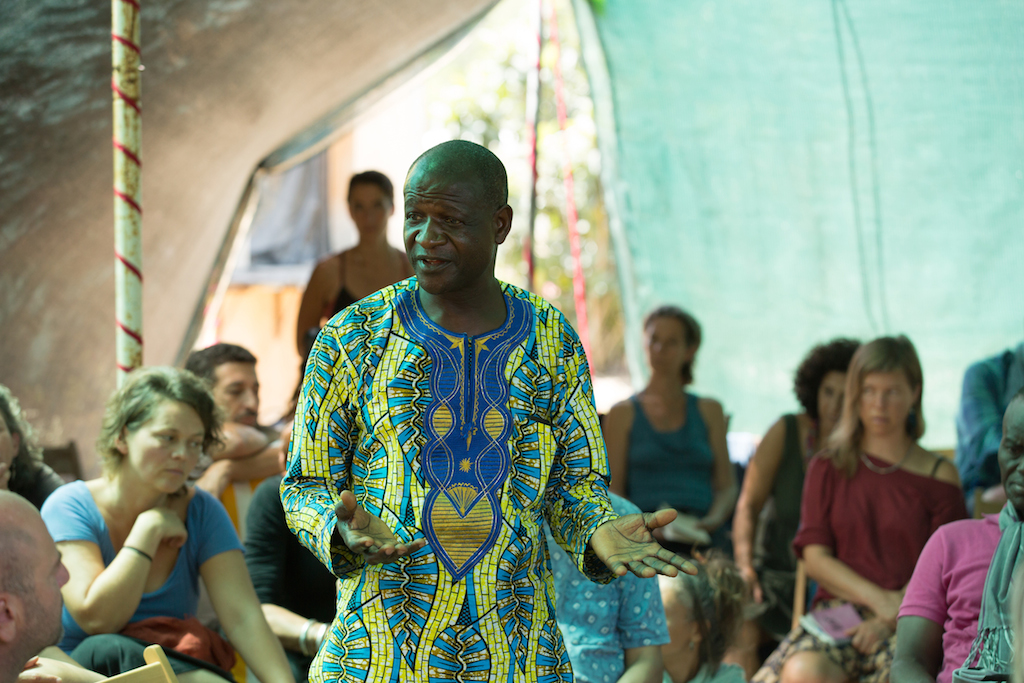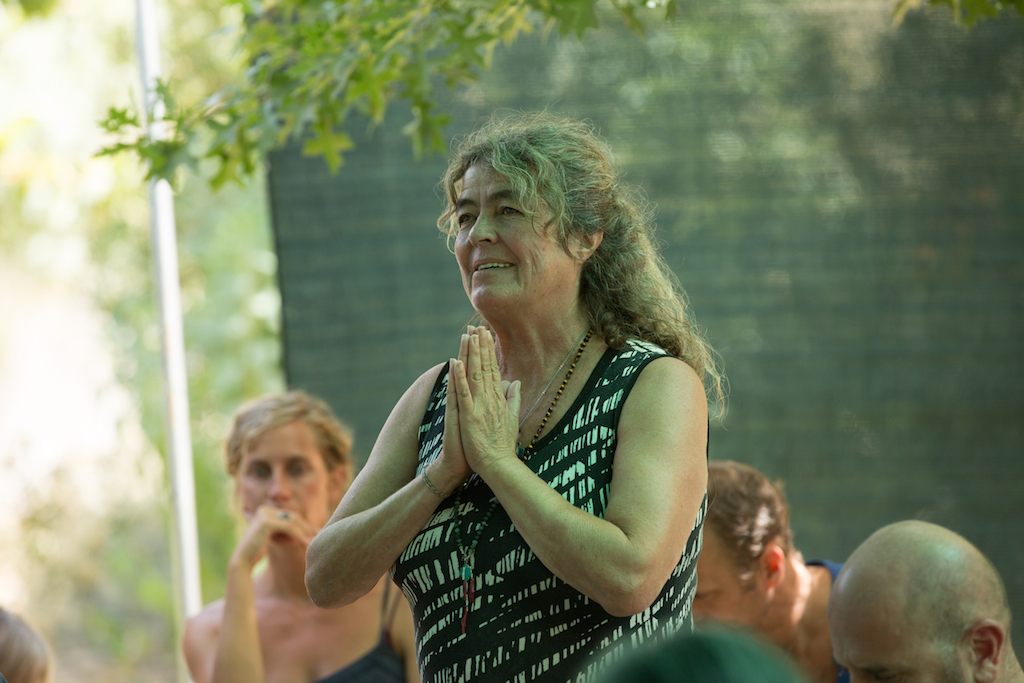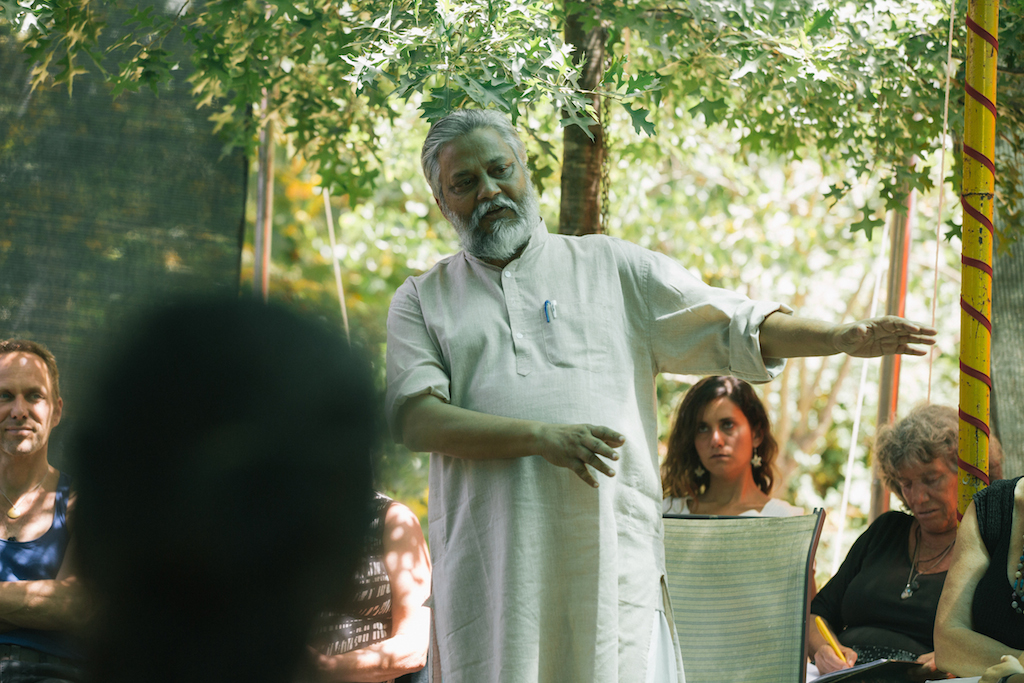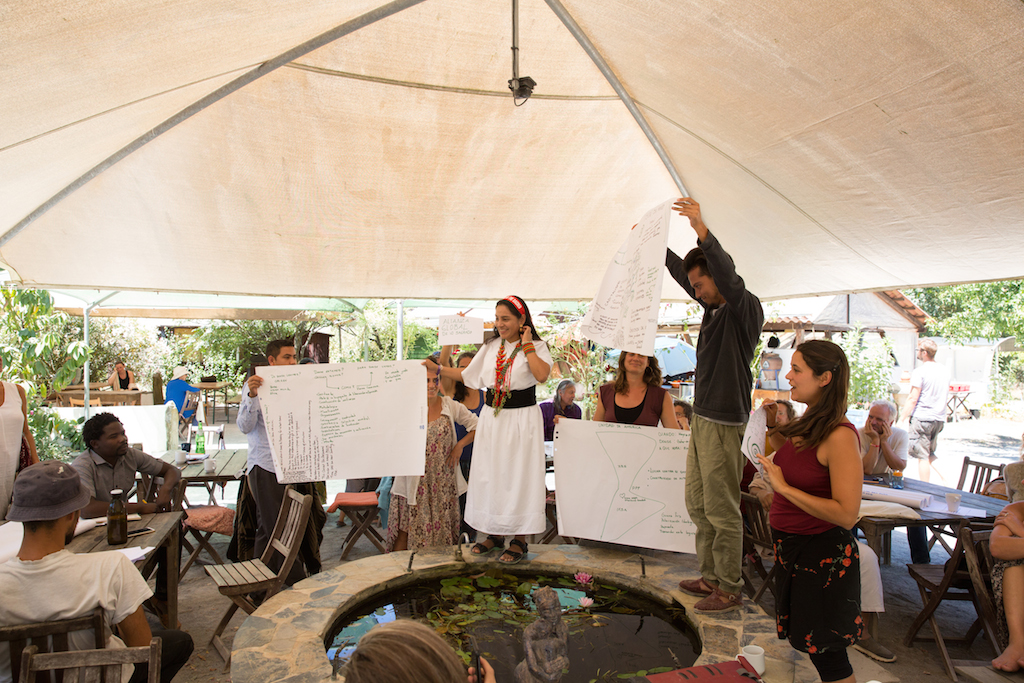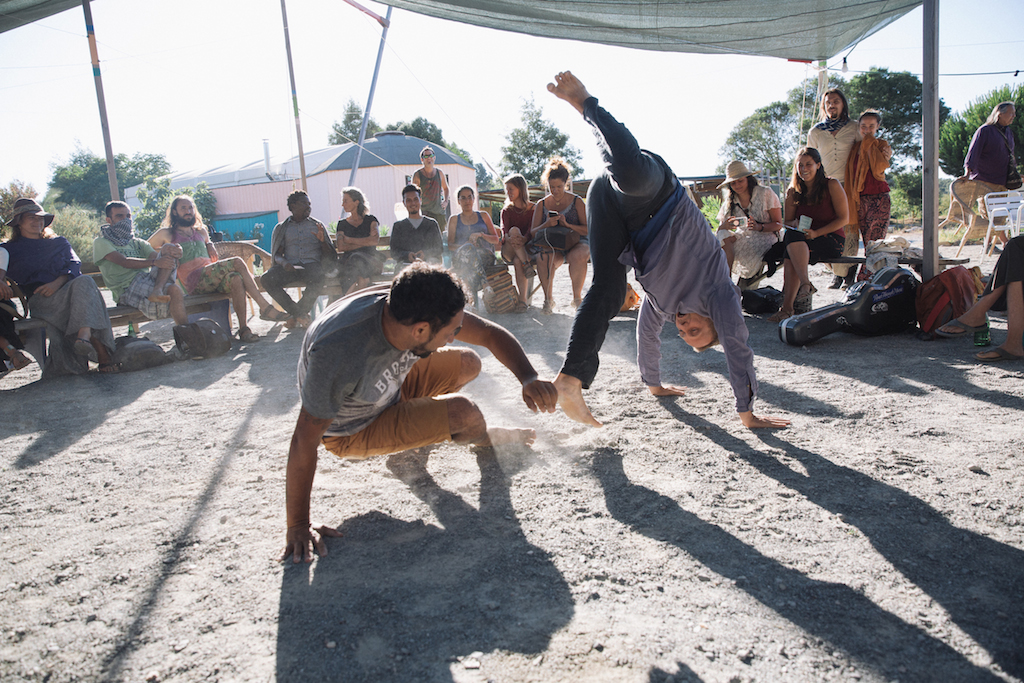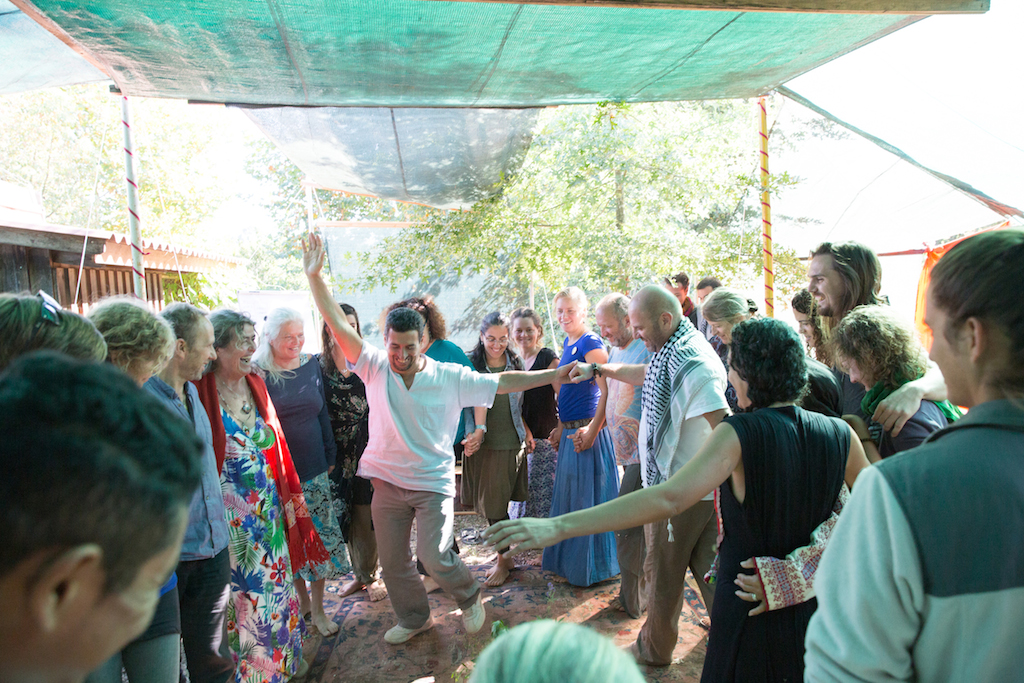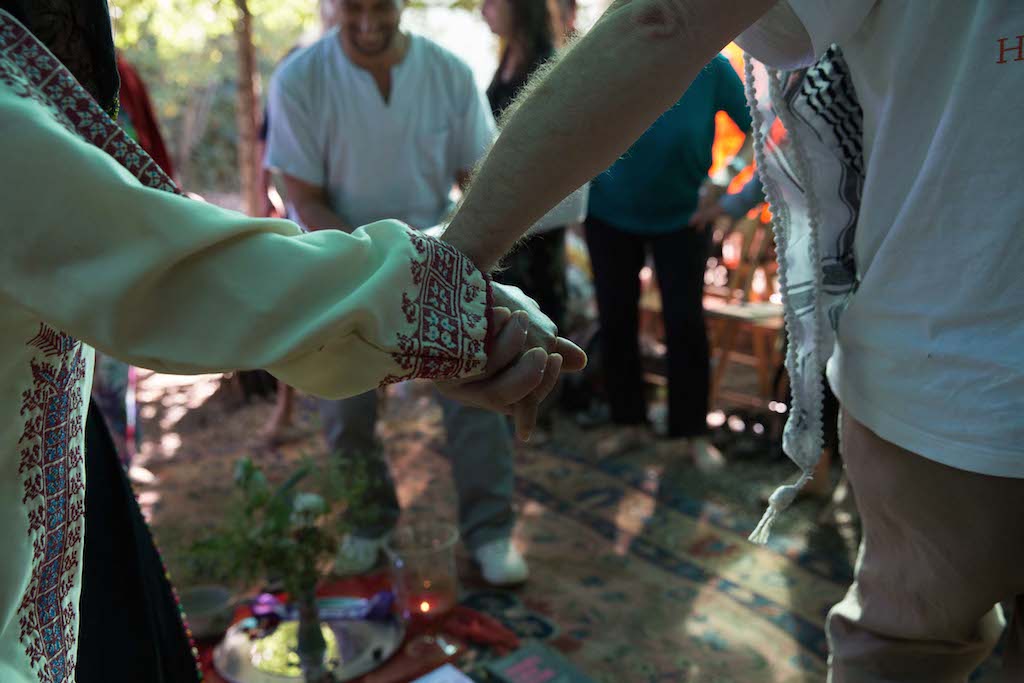Defend the Sacred: A Global Alliance for System Change
From August 1-10, more than 80 people from 30 countries met at the Tamera Peace Research & Education Center in Portugal under the banner of “Defend the Sacred.” Activists from liberation movements, indigenous people of different cultures, peace workers from slums, refugee camps and crisis areas, thinkers, civil rights activists and community founders… What do they all have in common?
Leila Dregger, September 5 2018
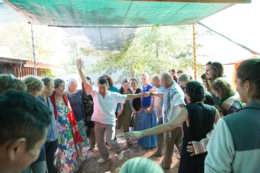
They all made a choice. Each one of them has, at some point in their lives, left the pre-established paths and prevailing opinions to radically engage themselves with what they hold sacred: water, life, peace. And now, they all say: We can’t do it alone. They came to Tamera to form a global alliance, a planetary community for protecting life on Earth.
This is true for Ladonna Bravebull Allard, the initiator of the Sacred Stone Camp at Standing Rock, which drew in up to 30,000 people. Utilizing prayer, ceremony, and nonviolent actions, they had tried to stop the planned Dakota Access Pipeline from running over their sacred places and under the Missouri. With their slogan “Defend the Sacred,” they reached the hearts of people from all over the world. Also for Ati Quigua, indigenous spokeswoman of the Arhuacos tribe from the high plateau of the Sierra Nevada de Santa Marta in Northern Colombia, where they embody a rich cultural tradition with an unbroken lineage of knowledge about the balance of feminine and masculine powers.
For the representatives of the Favela da Paz from Brazil, who know of the real wealth of live in their slums: cooperation and community. For Rajendra Singh, the doctor and water activist from Rajasthan, who initiated a popular movement for decentralized water management that reversed the desertification of an entire region and brought 11 rivers and 2000 villages to life again. For the Palestinian Saad Dagher, who builds an ecological alternative for the West Bank and even includes wild boars in his peace work – a great taboo for both the Islamic and the Jewish world. For Michael Lerner, the American rabbi, who raises his voice equally for socialism, justice and system change, as well as for the values of original Judaism. For Yael Ronen, Israeli director in Berlin, who makes big theater with refugee and Roma communities.
Mutual Support in Times of Great Threat
This list could go on for a long time. Each participant of this meeting could fill an entire program with their experience, knowledge and courage, often in silenced pain points of global violence. Some came with urgent calls for protection and solidarity. For example, Dona Brigida Gonzales and two other representatives of the Peace Community of San José de Apartadó in Colombia. For over 20 years, its inhabitants – simple peasants – have been a pillar of hope and forgiveness in the midst of a hopeless conflict. More than 300 members of the peace community have been murdered during this time, and the threat doesn’t stop. They ask for international accompaniment, which has been the most effective protection they’ve received so far. Joshua Konkankoh from Cameroon, who wants to offer the youth in his country a different future, also brought forth a call for help: his ecovillage and the whole region are helplessly exposed to murdering military and rebel groups. So far, he’s been able to protect his village with his peaceful authority, but he needs a sustainable solution.
This is how our shared questions gained great urgency: How can a global alliance emerge whose power will be greater than the power of a global system that is the same everywhere? How can we form a deep foundation of trust among such diverse people and groups, even when we’ll go our different ways again? How do we support each other when we or our work are threatened? Despite our differences, can we see a common vision for a post-capitalist world and find strategies for its realization? How do we anchor ourselves permanently in sacred space, beyond our specific traditions?
One thing was also clear in the reports of what happened since the first meeting a year ago: Despite the untiring efforts of the peace workers, violence increases in many places. Sami Awad, teacher of nonviolence and director of the Holy Land Trust in Bethlehem, Palestine said, “For many years, the situation has been getting worse and worse. One thing is having to deal with despair and violence every day. Yet having to do so without any hope of recovery is too much in the long run.”
Martin Winiecki, one of the gathering’s hosts, said, “The world is heading towards collapse. This is a choice for the future of humanity between a totalitarian nightmare on the one side, and total revolution, totally rethinking the very foundations of our culture, on the other hand. We have to come together as a planetary community to combine our struggles but, even more so, to make “utopia” concrete. Thus this collapse might actually not be a tragedy but an incredible moment of liberation from slavery and oppression.”
Listen to the opening talk by Martin Winiecki and Sabine Lichtenfels:
Learning from Utopias
Tamera itself is a place that awakens utopia and inspires activists. LaDonna Brave Bull Allard shared, “Our protest against the pipeline continues on many levels, politically, legally and in the media. Whoever controls the media, controls the world, and it’s important we’re able to tell our own stories. It’s not enough to say what we’re against. Tamera has inspired me on many levels. Coming to Europe, particularly to Portugal, to defend the sacred, means a lot to me. Here’s where the colonization began that has destroyed cultures around the world. Yet right now, here, an impulse for reconciliation and alternatives is emerging. Following this example, we’ve also started to invest in food autonomy and clean energy technologies.”
Monique Wilson from the Philippines, global coordinator of the dancing women’s movement One Billion Rising, which rises up to fight violence against women and girls in 200 countries, said: “In Tamera I rediscovered the heart of men. This allowed us to address and invite them much more to participate in our actions, which they readily accepted. That made a big difference in our movement. Inspired by the meeting last year, our campaign now increasingly addresses violence against Mother Earth. Oil drilling, deforestation of rain forests and giant dams are essentially nothing else than rape. We must stop abusing the earth as much as abusing female bodies.”
“We can’t do it alone.” This phrase, oft mentioned, means more than only an alliance among people. Because humanity can’t do it alone either. Whether we call it God, universal connectedness, or the power of oneness, we all feel the need to learn to cooperate with something reaching far beyond our human powers. Therefore, in addition to direct action, exchange and strategic considerations, prayers and ceremonies of various traditions, meditation, deep listening, silence and music were important elements of the ten-day meeting.
Sabine Lichtenfels, co-founder of Tamera, reminds us, “As humanity, we face the same existential threat that is already tangible to our friends from Colombia or Cameroon. This isn’t the fault of individuals, but the result of an overall system of violence. We can only end it if we know another system – the system of the world we come from, the system of life. Life is always directed toward healing, and we all still carry the memory of primordial connectedness with life within us, the indigenous source. The deepest system change is from separation to connectedness, from fear to trust, forgiveness and reconciliation.”
Water as a key for solving climate change?
As the meeting progressed, it became increasingly clear that strategy and prayer aren’t contradictory, but require another other. A core issue was water – a sacred element, especially for indigenous people. Many of them grew up in the consciousness of gratitude and connection to the water, they’re learning from it, praying with it, holding ceremonies for the rain. In an atmosphere of respect and mindfulness, experts pointed to the key importance of water for possibly solving climate change. Rajendra Singh: “We all know that water is life. But we also have to acknowledge that water is climate and climate is water.” To this end, Vlado Zaujec from Slovakia presented an ambitious plan. The “Rain for Climate” initiative aims to assist landowners around the world with modern technology in creating systems for decentralized water management, in the next 5-7 years before climate change threatens to spiral out of control. “If the rain can filter into the earth where it falls, global warming can be halted, as it binds carbon and stops erosion. Extreme weather events like floods, droughts and heat waves can be reversed by this simple local action. Yet have to act now, purposefully and on a global scale. ”
Claudine Nierth, a civil rights activist from Germany, spokeswoman for “Mehr Demokratie e.V.“, said: “I learned from Rain for Climate what I can do for the water and from the Indigenous people, why I have to do it. A global alliance needs common planning and strategy but it also needs the opening to the spiritual world and a bond with all beings. ”
The ten days were filled with intense encounters and deep listening to the painful points of the world situation, community building, networking and planning meetings, as well as deeply impactful insights and experiences for many participants. It was moving to experience how quickly trust can emerge among such diverse people, allowing them to communicate about pain and existential issues without being swept away by it. To witness how leaders of diverse traditions could show to each other what they love, beyond (cultural) egos, and approach together the sacred, the nameless mystery that is common to all.
In fact, it was the birth of an alliance for life that, in the face of the global threat, combines nonviolent resistance with building alternatives, prayer, and community.
Action against oil drilling in Portugal
During the entire gathering, we’ve been busy with the threat of planned oil and gas drilling in Portugal, asking ourselves, “Can we, as international activists, help to prevent them?” On August 4, in many places in Portugal on the hottest day since weather records began, the group traveled by bus to the beach of Cova do Vapor near Lisbon, where the Tagus river meets the Atlantic Ocean. Tamera’s Solar Test Field team set up a demonstration field with 12 solar cookers and gifted solar-cooked food to beachgoers. Together with several hundred participants, artists, activists, and friends from all over Portugal, guided by the aerial art activist John Quigley, accompanied by prayers from eight traditional directions, Defend the Sacred activists formed a huge message in the sand with their bodies: a mother and child dolphin, surrounded by a bright sun and the words, “Stop the oil drilling” and “Water is life”. Drones filmed it from the air and Portugal’s main TV channel SIC broadcasted it in their evening news.
It was impressive. But can such an action actually influence political decisions? Nobody knows all the correlations between cause and effect. As a matter of fact, seven days later, Portuguese President Marcelo Rebelo de Sousa said that he needed to reconsider his position on this issue, after meeting with activists. And nine days later, a court temporarily suspended the planned oil drilling off Aljezur (Algarve).
A next meeting is planned for summer 2019. Until then, the activists and participants of Defend the Sacred want to work together at different levels. There are specific ideas – ranging from mutual visits, knowledge transfer, training programs, participation in joint actions, rapid information flow when there are urgent needs all the way to media work for spreading experiences and key messages for a new global culture and campaigns. But above all, they want to create a social, ethical and spiritual platform that one can rely on, because people can actually see and recognize each other – a stable foundation for an alliance and a common global strategy for defending the sacred.
Follow the story of the gathering through the slideshow, by clicking the image.


